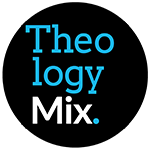Historically, the church has always understood that the Sabbath was a Jewish law that no longer applied to Christians. Though there has been some debate, the actual writings of the early Church fathers heavily suggest that the early church understood the Sabbath was fulfilled in Christ. First century non-Jewish Christians did not practice the Sabbath and both Jew and Gentile Christians in the first century both gathered on Sunday. Sunday was called the Lord’s Day and was not a New Sabbath day. Rather, it was a weekly day of worship commemorating the resurrection of Christ. It wasn’t until a few hundred years later that certain leaders in the church began to see “The Lord’s Day” as a new Sabbath. Even then, the church has always Gathered on Sunday. During the Reformation, the understanding of the Sabbath as Eschatological fulfillment became more emphasized. The Bible most clearly supports a view of the Sabbath that sees it as a type whose fulfillment is seen in the rest of Christ and ultimately the New Heavens and the New Earth.
The Bible is a record of God’s redemptive work in space and time. This story begins with an account of creation and it concludes with an account of recreation. The first words of Scripture are, “In the beginning…” and it could be assumed that the concluding words of the biblical narrative should be “In the end…” However, the idea that the closing of revelation provides can be summed up in the words, “In the NEW beginning…”
Christians must understand how the Bible narrative unfolds in order to understand the role of the Sabbath within the greater meta-narrative of scripture. Man began this story of Scripture as a glorious creation made in the image of God. He was more glorious than the other creatures God had made because God was willing to condescend and make covenant with man. God provided man with good gifts such as the role of being the vice-regent over creation as well as marriage. Man was at peace with God and as God looked over his creation and was pleased, he rested, or more accurately, ceased from his work. Man rebelled against God and in so doing severed any relationship of rest between him and his Creator. The rest that man once knew was replaced by a restlessness as he sought to till the ground and subject a chaotic creation back under his dominion. Over time, God gave man the privilege of calling him by a covenant name, Yahweh. As an act of grace, Yahweh also chose to give man a full day where he would not have to work but could rather devote himself to striving after a relationship with his estranged Creator. God called this day a Sabbath and consecrated it as a gift and act of grace towards man. It would be but a shadow of the rest man once knew, but it was still an act of grace nonetheless. More significantly, this hallowed day would be an image for man of what he once had and what through covenant and redemption, God would give back to him. The initial fulfillment of this is seen in Jesus’ “high priestly prayer”. The consummation of the great rest of God for his people is found in thet conclusion of Revelation as the picture of rest and peace is promised for those who are in Christ. Thom Shcreiner catches the vision of rest fulfillment very well as he states,
“The promised new creation will become a reality at the coming of Jesus Christ. God’s covenantal promises will then be fulfilled, and the groaning of the old creation will end when the new world dawns with its stunning beauty.”[7]
You can read the full articles in the series by following the Links Below.
- Judaism, The Church, and The Sabbath: An Historical Survey
- The Sabbath, The Church, and The 21st Century: Modern Views of the Sabbath
- The Sabbath In Scripture: A Textual Interaction
- The Sabbath as Fulfillment: A Textual Interaction
You can follow me on Twitter @KyleJamesHoward. Also, check out my podcast “Coram Deo Podcast” which focuses on issues concerning Biblical Counseling and Practical Theology. You can search for podcast on any major podcast catcher, listen on the web here, follow updates @CoramDeoPodcast, or just click the artwork below.
- Sabbath Series Summary – Part 5 - September 10, 2017
- The Sabbath as Fulfillment: A Textual Interaction – Part 4 - September 3, 2017
- Black Voices: “We Are Here, But You Won’t Listen.” - August 28, 2017









